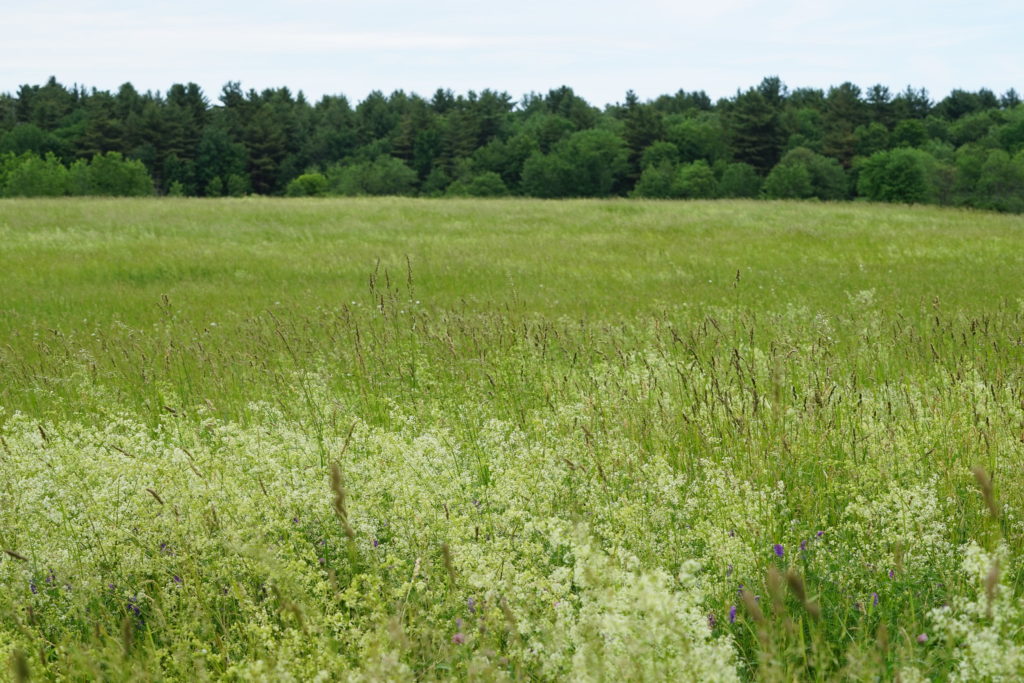Counties with more land enrolled in the USDA's Conservation Reserve Program can have lower average concentrations of particulate air pollution, a study shows for the first time
12 October 2022

Letting an agricultural field lay fallow, or not actively farmed, may cut down on air pollution while letting the land recover, according to new research in AGU’s journal GeoHealth. Credit: Jay Cross/flickr
AGU press contact:
Rebecca Dzombak, [email protected], +1 (202) 777-7492 (UTC-4 hours)
Contact information for the researchers:
Douglas Becker, University of Idaho, [email protected] (UTC-6 hours)
WASHINGTON — The USDA’s Conservation Reserve Program (CRP) promotes sustainable agricultural practices to improve habitat, soil and water quality. It may have an unintended benefit of improving air quality, too, according to new research published in AGU’s journal GeoHealth, which investigates the intersection of human and planetary health for a sustainable future.
The Conservation Reserve Program provides funds for farmers to pause agricultural activity on enrolled lands for 10 to 15 years, letting the landscape recover. On land enrolled in the CRP, agricultural production is typically paused, and land managers are encouraged to plant species that will improve environmental health and boost biodiversity. The program, which has run since 1985, has resulted in improved water quality and reductions in soil erosion.
“Because the decommissioned land no longer requires all the inputs that agricultural land does, and because we know that translates into so many benefits, we wanted to see if that would translate into air quality benefits, too,” said Douglas Becker, an environmental health scientist at the University of Idaho who led the study.
The new study is the first to examine the potential impact of the CRP on air quality. No longer applying fertilizers could mean fewer nitrogen compounds being added to the atmosphere, where they can break down and form particulates. Decreases in heavy machinery use along with increased vegetative cover typically reduce erosion, so less dust and other fine matter is sent into the air. The findings suggest a correlation, but the reasons for such a pattern remain to be determined.
To test whether there is a relationship between land enrolled in the CRP and air quality, Becker and his collaborators compared average, county-wide PM2.5 concentrations from the CDC’s National Environmental Public Health Tracking Network to the county’s percentage of arable land enrolled in the CRP. They studied nearly 2,300 counties in the contiguous U.S., looking at data between 2001 and 2016; CRP enrollment peaked in 2008, allowing the researchers to examine the potential role changes in the area of CRP land has one air quality.
After taking population density and wildfires — two significant factors for particulate air pollution — into account, Becker found average PM2.5 concentrations to be around 9.5 micrograms per cubic meter of air nationally. That concentration dropped by a small but significant amount, about 0.02 micrograms per cubic meter of air, with every 1% of land enrolled in the program.
“While this seems small, the overall impact in any county, and especially across the country, can be seen as surprisingly large,” Becker said. “This is especially true of health impacts,” which in large populations can show improvements even with small decreases in PM2.5.
Droughts, which typically dry out land and increase dust, can exacerbate PM2.5.
“Drought is so intimately linked to the formation of secondary atmospheric pollutants, like fine particulate matter,” said Becker. Still, based on the current literature, “we didn’t expect that the drought variable was going to play such a big role.”
Better air quality could also mean fewer deaths from particulate air pollution. The study found that based on peak CRP enrollment in 2008, over 1,300 deaths may have been avoided as a result of cleaner air in counties with more CRP land.
While the new study points out this relationship, the physical and chemical processes responsible still need to be studied. Future research could be improved by using smaller, sub-county scales and better considering how agricultural emissions are transported by wind across county lines, the paper notes. Adding these could allow scientist to better understand the causes of the observed relationship between PM2.5 and CRP-enrolled farmlands.
“That’s the holy grail here,” said Becker, of determining the causes of the relationship. “These are just associations, so this study is just the tip of the iceberg.”
# # #
AGU (www.agu.org) supports 130,000 enthusiasts to experts worldwide in Earth and space sciences. Through broad and inclusive partnerships, we advance discovery and solution science that accelerate knowledge and create solutions that are ethical, unbiased and respectful of communities and their values. Our programs include serving as a scholarly publisher, convening virtual and in-person events and providing career support. We live our values in everything we do, such as our net zero energy renovated building in Washington, D.C. and our Ethics and Equity Center, which fosters a diverse and inclusive geoscience community to ensure responsible conduct.
Notes for Journalists:
Download a PDF copy of the paper here. GeoHealth is published with open access and its articles are freely available.
Paper title:
“The Unintended Benefits of the Conservation Reserve Program for Air Quality”
Authors:
- Douglas Becker (corresponding author), Alexander Maas, Agricultural Economics and Rural Sociology, University of Idaho, Moscow, ID, USA
- Jude Bayham, College of Agricultural Sciences, Colorado State University, Fort Collins, CO, USA
- James Crooks, Division of Biostatistics and Bioinformatics, National Jewish Health, Denver, CO, USA